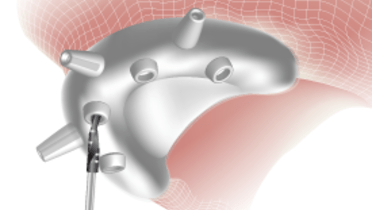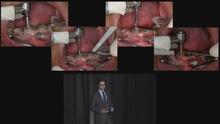-
0
Patient Assessment
- 0.1 Patient demand
- 0.2 Overarching considerations
- 0.3 Local history
- 0.4 Anatomical location
- 0.5 General patient history
-
0.6
Risk assessment & special high risk categories
- 5.1 Risk assessment & special high risk categories
- 5.2 age
- 5.3 Compliance
- 5.4 Smoking
- 5.5 Drug abuse
- 5.6 Recreational drugs and alcohol abuse
- 5.7 Parafunctions
- 5.8 Diabetes
- 5.9 Osteoporosis
- 5.10 Coagulation disorders and anticoagulant therapy
- 5.11 Steroids
- 5.12 Bisphosphonates
- 5.13 BRONJ / ARONJ
- 5.14 Radiotherapy
- 5.15 Risk factors
-
1
Diagnostics
-
1.1
Clinical Assessment
- 0.1 Lip line
- 0.2 Mouth opening
- 0.3 Vertical dimension
- 0.4 Maxillo-mandibular relationship
- 0.5 TMD
- 0.6 Existing prosthesis
- 0.7 Muco-gingival junction
- 0.8 Hyposalivation and Xerostomia
- 1.2 Clinical findings
-
1.3
Clinical diagnostic assessments
- 2.1 Microbiology
- 2.2 Salivary output
-
1.4
Diagnostic imaging
- 3.1 Imaging overview
- 3.2 Intraoral radiographs
- 3.3 Panoramic
- 3.4 CBCT
- 3.5 CT
- 1.5 Diagnostic prosthodontic guides
-
1.1
Clinical Assessment
-
2
Treatment Options
- 2.1 Mucosally-supported
-
2.2
Implant-retained/supported, general
- 1.1 Prosthodontic options overview
- 1.2 Number of implants maxilla and mandible
- 1.3 Time to function
- 1.4 Submerged or non-submerged
- 1.5 Soft tissue management
- 1.6 Hard tissue management, mandible
- 1.7 Hard tissue management, maxilla
- 1.8 Need for grafting
- 1.9 Healed vs fresh extraction socket
- 1.10 Digital treatment planning protocols
- 2.3 Implant prosthetics - removable
-
2.4
Implant prosthetics - fixed
- 2.5 Comprehensive treatment concepts
-
3
Treatment Procedures
-
3.1
Surgical
-
3.2
Removable prosthetics
-
3.3
Fixed prosthetics
-
3.1
Surgical
- 4 Aftercare
Guided vs non-guided
Key points
- Accurate implant planning is critical to achieve an optimal prosthetic result
- Accurate implant placement can be performed in a template assisted, semi-guided and guided procedure
- Implant surgery benefits from template-assisted surgery in complex situations
General considerations
Accurate implant planning is the first step to achieve an optimum prosthetic result. Well-fitting, well-designed dentures can directly be used for planning and pre-surgical analysis or a new tooth arrangement and mock-up have to be considered. Assessment should be made of both comprised vertical dimension of occlusion, position and axis of teeth, overjet and overbite and esthetic parameters such as lipline and smileline. Implant surgery should always be template-assisted and it should be template-guided in complex situations, such as the fully edentulous arch.
Template-assisted, non-guided
If interforaminal implants are being placed, the trial arrangement/denture itself or a simple splint can be used to mark the implant position in relation to the planned denture. A preliminary lateral radiograph gives some information on the shape of the mandibular jaw. The same applies for implants to be placed in between the maxillary sinuses.
Along with computer-assisted 3D analysis a backward-planning may be introduced with high predictability of the therapeutic goal. Thus, tooth arrangements/dentures or their duplicates are used during CBCT.
Template-assisted, semi-guided surgery
Hand-made templates are duplicates obtained from the denture/tooth arrangement with access holes or titanium tubes. These are located in proper positions and axis of the planned teeth according to the CBCT analysis and enable a guided pilot drill to mark the implant location and axis direction. Then the flap is raised and the remaining surgery is carried out without full guidance.
Fully-guided surgery
Using digital data from CBCT, a surgical template can be obtained for fully guided surgery if the corresponding planning software is available. Fully-guided surgery is recommended for flapless surgery and can also be combined with open surgery if further elective surgical procedures, such as local GBR, become necessary. When fully-guided surgery is considered, the mouth opening capacity of the patient has to be evaluated pre-surgically, since more space is required to position the drills in the sleeves of the template.






